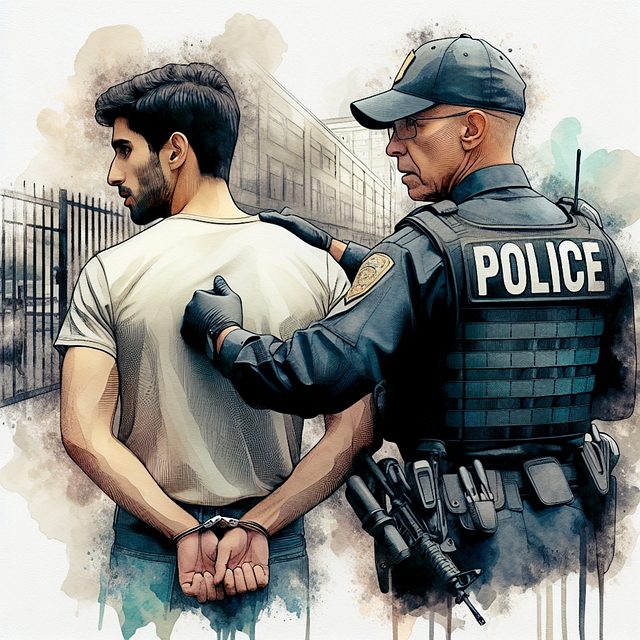Pedestrians' rights, especially for individuals with disabilities, are crucial for creating safe streets and an inclusive society. This involves protecting them from hazards like distracted or drunk driving (DUI) through laws and specialized considerations, such as accessible walkways and traffic signals. Legal protections during DUI investigations safeguard disabled pedestrians' rights, while awareness enables advocacy for their security. Key strategies include accessible infrastructure, educational programs, specialized transportation, and technology like smart city initiatives. Collaborative efforts between disabled individuals, advocacy groups, and urban planners result in innovative solutions like tactile paving and dedicated pedestrian lanes. Strict enforcement of DUI laws targeting disabled drivers under the influence has led to improved safety within this demographic, showcasing the impact of targeted initiatives on overall street safety.
In recent years, ensuring safe streets for pedestrians has become a paramount concern, especially for vulnerable populations including individuals with disabilities. This comprehensive guide delves into the multifaceted aspects of pedestrian rights and street safety. From understanding the legal framework governing pedestrians’ rights to exploring innovative technologies aimed at enhancing accessibility, we dissect critical issues such as the impact of disabilities on street navigation and the unique challenges posed by DUI cases involving disabled individuals.
Through real-world case studies, this article highlights successful advocacy efforts and policy changes that have transformed communities, ultimately advocating for a more inclusive and secure environment for all pedestrians.
- Understanding Pedestrians' Rights: A Comprehensive Overview
- The Impact of Disabilities on Street Safety: Challenges and Solutions
- DUI Defense for Individuals with Disabilities: Legal Considerations
- Creating Safe Streets: Strategies for Community Engagement
- Technology's Role in Enhancing Pedestrian Safety for the Disabled
- Case Studies: Successful Advocacy and Policy Changes
Understanding Pedestrians' Rights: A Comprehensive Overview

Pedestrians’ rights are a crucial aspect of safe streets, especially for individuals with disabilities who may face unique challenges while navigating public spaces. Understanding these rights is essential to fostering an inclusive environment. In many jurisdictions, laws protect pedestrians from various hazards, ensuring their safety while crossing streets, walking on sidewalks, and utilizing crosswalks. These regulations often include provisions against dangerous driving behaviors, such as distracted or drunk driving (DUI), which can significantly impact vulnerable road users.
When it comes to individuals with disabilities, specific considerations come into play. For instance, accessible walkways, ramps, and specialized traffic signals can make streets safer for wheelchairs, canes, and other assistive devices. Moreover, laws may offer additional protection during the investigation of a DUI incident, ensuring fair treatment, especially when disability is a factor. Awareness of these rights empowers pedestrians to advocate for their safety and encourages communities to implement measures that create a more inclusive and secure environment for all.
The Impact of Disabilities on Street Safety: Challenges and Solutions

Individuals with disabilities face unique challenges when navigating public spaces, and street safety is no exception. From visual impairments that hinder obstacle detection to mobility issues that make crossing busy roads difficult, these obstacles can significantly impact pedestrian security. Moreover, the risk of accidents often increases due to the potential for altered perception or reduced reaction times.
Addressing these concerns requires a multi-faceted approach. One crucial strategy involves implementing accessible infrastructure, such as raised crosswalks and tactile paving, which aids in navigation for visually impaired pedestrians. Additionally, raising awareness through educational programs can help both disabled individuals and able-bodied citizens navigate streets more safely. Furthermore, providing specialized transportation options and ensuring accessibility in public vehicles, including those operated by DUI defense services catering to the disabled community, is essential in promoting independence and enhancing overall street safety.
DUI Defense for Individuals with Disabilities: Legal Considerations

In many jurisdictions, individuals with disabilities face unique challenges when it comes to navigating the legal system, especially in cases involving DUI (Driving Under the Influence). A DUI defense for people with disabilities requires a nuanced approach, considering both their specific conditions and the applicable laws. Lawyers advocating for such clients must be well-versed in the interplay between disability law and criminal procedure.
One of the primary legal considerations is ensuring that any potential impairment is attributed to the disability rather than a separate medical condition. This distinction is crucial as it can significantly impact the defense strategy. Additionally, attorneys should explore alternative explanations for unusual behavior or performance indicators, such as medication side effects or assistive device malfunctions. The goal is to present a compelling case that challenges the prosecution’s evidence and safeguards the rights of individuals with disabilities in traffic-related legal proceedings.
Creating Safe Streets: Strategies for Community Engagement

Creating safe streets requires a collaborative approach, especially when prioritizing pedestrians’ rights and well-being. Community engagement is a powerful strategy to ensure that street designs and policies meet the needs of all residents, including those with disabilities. By fostering open dialogue, local governments can identify specific challenges faced by pedestrians with disabilities, such as lack of accessible crosswalks, uneven pavements, or inadequate lighting. These insights are vital in developing inclusive solutions.
Involving community members with disabilities, advocacy groups, and experts in urban planning can lead to innovative ideas like implementing specialized traffic signals for visually impaired individuals, installing tactile paving, or creating dedicated pedestrian lanes. Additionally, public education campaigns can raise awareness about the rights of pedestrians with disabilities and promote responsible behavior from drivers, reducing incidents of DUI (Drunk Driving Under Influence) that may target vulnerable street users.
Technology's Role in Enhancing Pedestrian Safety for the Disabled

In today’s digital era, technology plays a pivotal role in enhancing pedestrian safety, especially for individuals with disabilities. Smart city initiatives are incorporating innovative solutions to create safer walking environments. For instance, advanced traffic signal systems equipped with sensors can detect and prioritize pedestrians with mobility challenges, ensuring smoother crossings. Additionally, mobile apps designed for the disabled community offer real-time navigation assistance, alerting users to potential hazards like abrupt road changes or uneven sidewalks, thus empowering them to navigate safely.
These technological advancements complement accessible infrastructure designs that have been gaining traction globally. Well-planned urban landscapes with dedicated pedestrian paths, tactile paving for the visually impaired, and audible crosswalk signals not only accommodate but also empower people with disabilities to move freely and independently. In contrast to the traditional focus on DUI defense for individuals with disabilities, these technological interventions proactively ensure their inclusion and safety in public spaces, fostering a more inclusive society.
Case Studies: Successful Advocacy and Policy Changes

Successful advocacy and policy changes often shine a spotlight on specific communities’ unique challenges. For instance, organizations dedicated to pedestrians’ rights have made significant strides in creating safer street environments for individuals with disabilities. By highlighting the dangers faced by this vulnerable group, they’ve driven meaningful policy reforms.
One notable case involves advocacy for enhanced accessibility features like tactile paving and well-marked crosswalks, which significantly improve safety for visually impaired pedestrians. Additionally, efforts to stringent enforcement of DUI laws specifically targeting drivers under the influence who also have disabilities have led to more responsible driving behaviors and reduced accidents involving this demographic. These examples illustrate how targeted initiatives can lead to substantial improvements in street safety for all pedestrians.
Pedestrians’ rights and safe streets are integral components of a just and accessible society. By understanding the legal framework, addressing disability-related challenges, and leveraging community engagement and technology, we can create inclusive environments that prioritize everyone’s well-being. The strategies outlined in this article, including successful advocacy efforts and policy changes, provide a roadmap for enhancing pedestrian safety, especially for individuals with disabilities facing issues like DUI. Together, we can build communities where everyone feels secure and respected while navigating public spaces on foot.






